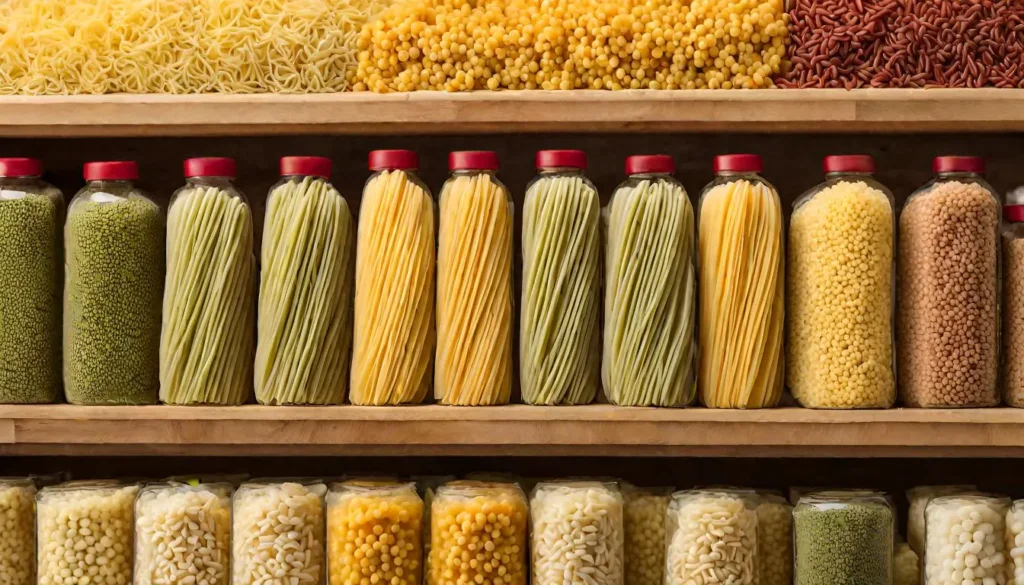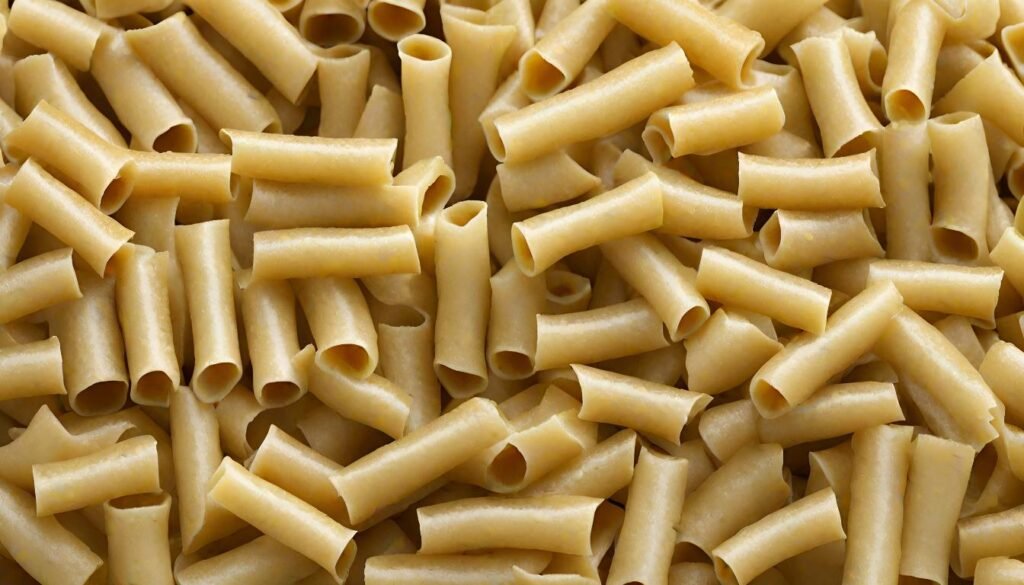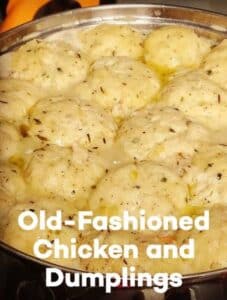
In this article, we explore the question, What’s the difference between Ditali and Tubetti pasta? Uncovering their unique characteristics, uses, and cultural stories. We take you on a journey from their Italian origins to tips on perfecting their preparation. Join us in understanding what sets these pasta varieties apart.
In this comprehensive exploration, we focus on two lesser-known yet delightful pasta varieties: Ditali and Tubetti. From their unique characteristics to culinary uses, historical significance, and nutritional profiles. This article unravels the intriguing differences between these two types. Whether you’re a chef or a food enthusiast, get ready for a flavorful journey through the art and science of pasta.
Unraveling the Variations in Ditali and Tubetti Pasta
The World of Pasta Shapes and Sizes
Pasta, a staple in Italian cuisine, is celebrated for its incredible diversity. Among the myriad shapes and sizes, Ditali and Tubetti emerge as two intriguing varieties. While they may appear similar at first glance, each holds its own in the vast landscape of pasta.
Ditali, often likened to small tubes or thimbles, is a classic choice in soups and stews. Its name, derived from the Italian word for ‘thimbles,’ reflects its shape. This pasta variety is not just a culinary delight but also a piece of Italian heritage. Embodying the simplicity and elegance of traditional Italian cooking.
On the other hand, Tubetti, slightly smaller and more delicate, is a versatile player in the pasta world. Its name translates to ‘small tubes,’ indicating its stature in the pasta family. Tubetti is a testament to the Italian culinary principle of ‘la bella figura’ – making every meal aesthetically pleasing and balanced in flavor.
Both Ditali and Tubetti, while similar in shape, offer unique experiences in texture and taste. They are perfect examples of how small variations in size and form can lead to different culinary applications and sensory experiences. As we explore these pastas further, we’ll discover not just their physical differences but also how they embody the rich, diverse culture of Italian pasta-making.

In the next sections, we’ll dive deeper into each variety, exploring their characteristics, culinary uses, and much more. Stay tuned as we unravel the delightful nuances of Ditali and Tubetti pasta.
In the upcoming, we will explore the world of Ditali pasta in more detail, examining its unique characteristics and culinary applications. Stay tuned for this flavorful journey into one of Italy’s beloved pasta varieties.
Exploring Ditali Pasta
Delving Into Ditali’s Distinctive Characteristics
Ditali pasta, with its distinctive tube-like shape, is a quintessential ingredient in many Italian soups and stews. Each piece, resembling a small thimble, typically measures about half an inch in length. The robust structure of Ditali makes it an ideal candidate for absorbing flavors from broths and sauces. Enhancing the overall taste of the dishes it graces.
The texture of Ditali is particularly noteworthy. When cooked al dente, it offers a satisfying bite – not too soft, yet yielding enough to blend harmoniously with other ingredients. This textural balance is a hallmark of well-prepared Ditali, making it a favorite in kitchens both in Italy and around the world.
Tubetti Pasta: Exploring its Unique Attributes and Culinary Versatility
Ditali’s versatility shines in its culinary applications. It’s most commonly found swimming in hearty minestrone or lending substance to a rich, tomato-based pasta e fagioli. However, its use is not limited to soups. For an authentic Ditali pasta recipe, visit BBC Good Food. Moreover, for a deeper dive into the history and versatility of this pasta, check out our comprehensive guide on Ditalini Pasta: History, Versatility, and Culinary Magic. Ditali also makes a delightful addition to cold pasta salads, where its hollow shape cleverly catches small bits of dressing and vegetables, ensuring a burst of flavor in every bite.

In traditional Italian cooking, Ditali is often paired with legumes, such as lentils or chickpeas, creating a nutritious and satisfying meal. This combination not only offers a delightful texture contrast but also adheres to the Mediterranean diet’s principles of incorporating plant-based proteins.
Ditali’s ability to pair well with a variety of ingredients – from leafy greens to hearty meats – makes it a valuable asset in the culinary world. Its simplicity is its strength, allowing it to adapt and enhance a wide range of dishes.
In the next section, we’ll turn our attention to Tubetti pasta, exploring its unique characteristics and how it differs from its close relative, Ditali. As we continue our pasta journey, remember that each variety, though seemingly similar, has its own story to tell and flavors to unveil.
Stay tuned, where we will delve into the world of Tubetti pasta, uncovering its distinct qualities and culinary uses. Join us as we continue to explore the rich tapestry of Italian pasta varieties.
Discovering Tubetti Pasta
Characteristics of Tubetti
Tubetti, a charming and often overlooked pasta variety, is a testament to the subtlety and precision of Italian pasta craftsmanship. Slightly smaller and more slender than Ditali, Tubetti resembles miniature tubes, each piece a perfect vessel for capturing flavors. This pasta’s diminutive size makes it not just a delight to behold but also a joy to eat. Offering a delicate texture that is both tender and firm.
The beauty of Tubetti lies in its ability to absorb and complement the flavors of the dish it is part of. When cooked properly, Tubetti maintains its shape and texture, providing a gentle contrast to softer ingredients in a dish. This quality makes it a favored choice for lighter soups and broths, where its presence adds depth without overwhelming the other elements.
Culinary Uses of Tubetti
Tubetti’s culinary versatility is as impressive as its form. It is often the star in lighter, broth-based soups like minestrina. Where its small size allows it to mingle seamlessly with vegetables and herbs. In these dishes, Tubetti absorbs the delicate flavors of the broth, becoming tiny morsels of taste that enhance every spoonful.
Beyond soups, Tubetti also finds its way into more substantial fare. It pairs beautifully with fresh, vibrant sauces, particularly those based on tomatoes or pesto. In these combinations, Tubetti’s subtle texture complements the sauce without competing for attention.
For those who enjoy experimenting in the kitchen, Tubetti offers a canvas for creativity. It can be used in baked pasta dishes, where it nestles snugly between layers of cheese and sauce, or in refreshing pasta salads, tossed with seasonal vegetables and a light dressing.
As we continue to explore the nuances of these delightful pasta varietie. It’s clear that both Ditali and Tubetti have unique qualities that make them stand out in the vast world of Italian pasta. In the next section, we’ll dive deeper into a side-by-side comparison of Ditali and Tubetti. Highlighting their differences and best culinary applications.
Now, we will present a detailed comparison between Ditali and Tubetti, exploring their differences in size, shape, texture, and culinary uses. Join us as we further unravel the intricacies of these two fascinating pasta varieties.
Ditali vs. Tubetti – A Detailed Comparison
Size and Shape Differences
The primary distinction between Ditali and Tubetti lies in their size and shape. Ditali, slightly larger and resembling a thimble, is robust and substantial. Its size makes it ideal for absorbing the flavors of thicker sauces and broths. In contrast, Tubetti is more delicate and slender, akin to tiny tubes. This smaller size allows Tubetti to blend seamlessly into lighter dishes, providing a subtle texture without overpowering other ingredients.
Texture and Taste Variations
Texture plays a crucial role in differentiating Ditali from Tubetti. Ditali’s slightly larger size gives it a firmer bite, making it a satisfying addition to heartier meals. Also, learn more about the importance of pasta texture in Italian cooking at Serious Eats. Its ability to maintain structure under the weight of rich sauces and dense ingredients is one of its key characteristics. Tubetti, on the other hand, offers a more delicate mouthfeel. Its smaller size means it cooks quickly and is more likely to absorb the surrounding flavors. Making it a perfect choice for dishes where subtlety is key.
Best Culinary Applications for Each
When it comes to culinary applications, each pasta has its own strengths. Ditali excels in dishes where its size and texture can stand up to robust flavors and ingredients. It’s the pasta of choice for thick soups like pasta e fagioli or minestrone, as well as for hearty pasta salads loaded with vegetables and proteins.
Tubetti, with its delicate size and texture, is more suited to lighter, broth-based soups such as minestrina. It also works wonderfully in simple pasta dishes that feature fresh, light sauces. Its ability to absorb flavors makes it a great candidate for dishes where the broth or sauce is the star.
In summary, while Ditali and Tubetti may appear similar at a glance, their differences in size, texture, and optimal culinary uses set them apart. Understanding these nuances allows chefs and home cooks alike to choose the right pasta for their specific dish. Ensuring a harmonious and delicious outcome.
Next, we will explore the historical and cultural context of these pasta varieties. Delving into their origins and the regional preferences that have shaped their use in Italian cuisine. Join us as we uncover the rich history behind Ditali and Tubetti.
The Cultural Significance of Pasta Shapes
Regional Preferences in Italy
The diversity of pasta shapes in Italy is not just a matter of culinary creativity; it’s deeply rooted in the country’s regional histories and cultural identities. Moreover, Ditali and Tubetti, like many pasta varieties, have stories that are intertwined with the regions they originate from.
Ditali, with its robust structure, is often associated with the hearty, rustic cuisine of Southern Italy. In regions like Campania and Sicily, where robust flavors and hearty ingredients dominate the culinary landscape, Ditali is a popular choice. It’s used in traditional dishes that reflect the local produce and cultural influences of these areas.
Tubetti, on the other hand, has a more delicate presence and is commonly found in the lighter, broth-based dishes of Northern Italy. This region, known for its subtler and more refined flavors, favors Tubetti in soups and light pasta dishes that showcase the quality of the local ingredients without overwhelming them.
Evolution of Pasta Varieties
The evolution of pasta shapes like Ditali and Tubetti is a testament to Italy’s rich culinary history. Besides, over centuries, as pasta-making techniques were refined and regional cuisines developed. Different shapes emerged to suit the ingredients and cooking styles of each area.
This evolution was influenced by factors such as the local climate, available ingredients, and historical trade routes. For instance, the introduction of tomatoes from the Americas transformed Italian cuisine, leading to the creation of new pasta shapes that were better suited to tomato-based sauces.
Today, the variety of pasta shapes, including Ditali and Tubetti, is a reflection of Italy’s diverse culinary heritage. Each shape tells a story of the region it comes from, the people who created it, and the historical events that shaped its development.

In the next section, we will delve into practical cooking tips and tricks for preparing Ditali and Tubetti. From choosing the right sauces to mastering the perfect al dente texture, we’ll explore how to bring out the best in these delightful pasta varieties. Stay tuned for a journey into the art of pasta cooking.
Mastering Pasta Preparation
Cooking Techniques for Ditali and Tubetti
Cooking pasta to perfection is an art form, and this holds especially true for varieties like Ditali and Tubetti. The key to cooking these pastas lies in understanding their unique characteristics and how they interact with different ingredients and sauces.
For Ditali, the goal is to achieve a texture that is firm to the bite, or ‘al dente’. This is crucial for dishes where Ditali needs to hold its own against hearty ingredients. Interested in more unique cooking techniques? Discover how to perfectly cook other dishes in our Ultimate Guide to Making French Fries in an Air Fryer.” Start by boiling it in salted water for the time recommended on the package, usually around 10-12 minutes. Always taste a piece before draining to ensure it has reached the desired texture.
Tubetti, being smaller and more delicate, requires a slightly different approach. It cooks faster, typically in 7-9 minutes. Tubetti is perfect for absorbing the flavors of a broth, so consider adding it directly to your soup towards the end of cooking. This allows the pasta to become infused with the flavors of the soup, enhancing the overall taste of the dish.
Pairing with Sauces and Ingredients
Choosing the right sauce or ingredients to pair with your pasta can elevate your dish to new culinary heights. Ditali, with its larger size and firmer texture, pairs well with thicker sauces and chunky ingredients. It’s ideal for rich tomato-based sauces, creamy cheese sauces, or even a hearty meat ragù. The pasta’s hollow shape allows it to capture and hold onto these thicker sauces, ensuring a flavorful experience with every bite.
Tubetti, on the other hand, excels when paired with lighter, more delicate sauces. A simple tomato basil sauce, a light vegetable broth, or even a subtle olive oil and garlic dressing can complement Tubetti’s delicate texture without overpowering it. This pasta also works well in cold salads, mixed with fresh vegetables, herbs, and a light vinaigrette.
Both Ditali and Tubetti offer a world of culinary possibilities. Whether you’re cooking a comforting soup or a refreshing pasta salad, these versatile shapes can adapt to a wide range of flavors and cooking styles.
Now, we will explore the nutritional information of Ditali and Tubetti, discussing their health benefits and how they fit into a balanced diet. Join us as we delve into the nutritional aspects of these delightful pasta varieties.
Nutritional Profile of Pasta Varieties
Health Benefits of Ditali and Tubetti
Pasta, a dietary staple, not only provides a satisfying meal but also offers numerous health advantages. Learn about the nutritional benefits of Ditali and Tubetti, both primarily crafted from durum wheat, a source of essential nutrients.
Complex Carbohydrates for Sustained Energy
Discover how Ditali and Tubetti serve as excellent sources of complex carbohydrates, ensuring a steady release of energy. Ideal for individuals requiring prolonged energy, such as athletes, these pasta varieties are low in sodium and cholesterol-free, promoting heart health when paired with suitable sauces and ingredients.
Protein Boost and Versatility
Explore the modest protein content in pasta, which can be enhanced by combining it with protein-rich foods like legumes, cheese, or meat. This versatility is especially beneficial in vegetarian and vegan diets, providing a delectable means to incorporate plant-based proteins.
Dietary Fiber and Whole Wheat Options
Understand the significance of fiber, particularly in whole wheat versions of Ditali and Tubetti. Dietary fiber aids digestion and supports maintaining a healthy weight by inducing a feeling of fullness. Opt for whole wheat pasta to effortlessly increase your fiber intake.
Balanced Consumption and Culinary Creativity
Highlight the importance of portion control while emphasizing that pasta, when balanced with vegetables, lean proteins, and healthy fats, can contribute to a well-rounded and nutritious meal. Provide insights on how culinary creativity enhances the nutritional value of pasta dishes.
Nutrient-Rich Culinary Choice
Summarize the nutritional virtues of Ditali and Tubetti, portraying them as more than just versatile culinary options. Emphasize their value in a balanced diet when enjoyed in moderation and combined with wholesome ingredients.
In the next section, we’ll address some frequently asked questions about Ditali and Tubetti, providing additional insights into these fascinating pasta varieties. For more creative culinary ideas and recipes, explore our Candy Grapes Guide: Easy Recipes & Expert Tips, perfect for those looking to expand their cooking repertoire.” Stay tuned for our FAQs section, where we’ll explore common queries and offer expert answers.
Frequently Asked Questions
Common Queries About Ditali and Tubetti
In this section, we address some of the most frequently asked questions about Ditali and Tubetti pasta, providing deeper insights into these popular Italian pasta varieties.
Can Ditali and Tubetti be used interchangeably in recipes?
- While Ditali and Tubetti are similar, their size difference can affect the texture and cooking time of a dish. Ditali, slightly larger, suits heartier recipes better, while Tubetti excels in lighter, broth-based dishes. You can substitute one for the other, but it may slightly alter the final outcome of the dish.
What are the best ways to store Ditali and Tubetti pasta?
- Uncooked Ditali and Tubetti should be stored in a cool, dry place in an airtight container. They can last for up to two years if stored properly. Cooked pasta should be refrigerated and is best used within 3-5 days.
Are Ditali and Tubetti suitable for people with gluten intolerance?
- Traditional Ditali and Tubetti are made from wheat and contain gluten. However, gluten-free versions made from rice, corn, or other gluten-free grains are available for those with gluten intolerance or celiac disease.
How can I make my Ditali or Tubetti pasta dish healthier?
- To make a healthier pasta dish, consider using whole wheat Ditali or Tubetti, adding plenty of vegetables, and opting for lighter sauces. Incorporating lean proteins like chicken, fish, or legumes can also boost the nutritional value.
Are there any vegan options for Ditali and Tubetti pasta dishes?
- Yes, you can make many pasta dishes using Ditali and Tubetti vegan by omitting animal products and incorporating plant-based alternatives. For example, use vegetable broth in soups and replace cheese with nutritional yeast or vegan cheese in pasta salads.
With these FAQs, we hope to have provided valuable information that enhances your understanding and enjoyment of Ditali and Tubetti pasta. In the next section, we will conclude our comprehensive exploration of these delightful pasta varieties, summarizing the key points and insights from our journey.
Summarizing the Pasta Journey
Final Thoughts on Ditali and Tubetti
As we conclude our exploration of Ditali and Tubetti pasta, it’s clear that these two varieties, while similar in appearance, offer distinct culinary experiences. Ditali, with its larger size and firmer texture, is a versatile choice for heartier dishes, absorbing flavors from rich sauces and broths. Tubetti, smaller and more delicate, is ideal for lighter meals, blending seamlessly into soups and salads.
The journey through the world of Ditali and Tubetti pasta highlights not only their unique characteristics but also the rich cultural and historical context of Italian pasta-making. From regional preferences to the evolution of pasta shapes, these varieties embody the diversity and creativity of Italian cuisine.
In terms of preparation, both Ditali and Tubetti require careful cooking to achieve the perfect al dente texture. “They also provide nutritional benefits, serving as good sources of carbohydrates, and, when using whole wheat versions, contributing to dietary fiber.” Balancing these pastas with a variety of ingredients can lead to delicious and nutritious meals.
Whether you’re a seasoned chef or a home cook, grasping the nuances of Ditali and Tubetti can elevate your culinary skills. These pastas, with their distinct shapes and textures, provide endless possibilities for creative and flavorful dishes.
In summary, Ditali and Tubetti are more than just pasta varieties; they are a testament to the art and tradition of Italian cooking. Each brings its own unique qualities to the table, offering a world of flavors and textures to explore and enjoy.
With this comprehensive guide, we hope you feel inspired to experiment with Ditali and Tubetti in your kitchen, discovering new ways to enjoy these delightful pasta varieties. Buon appetito!




